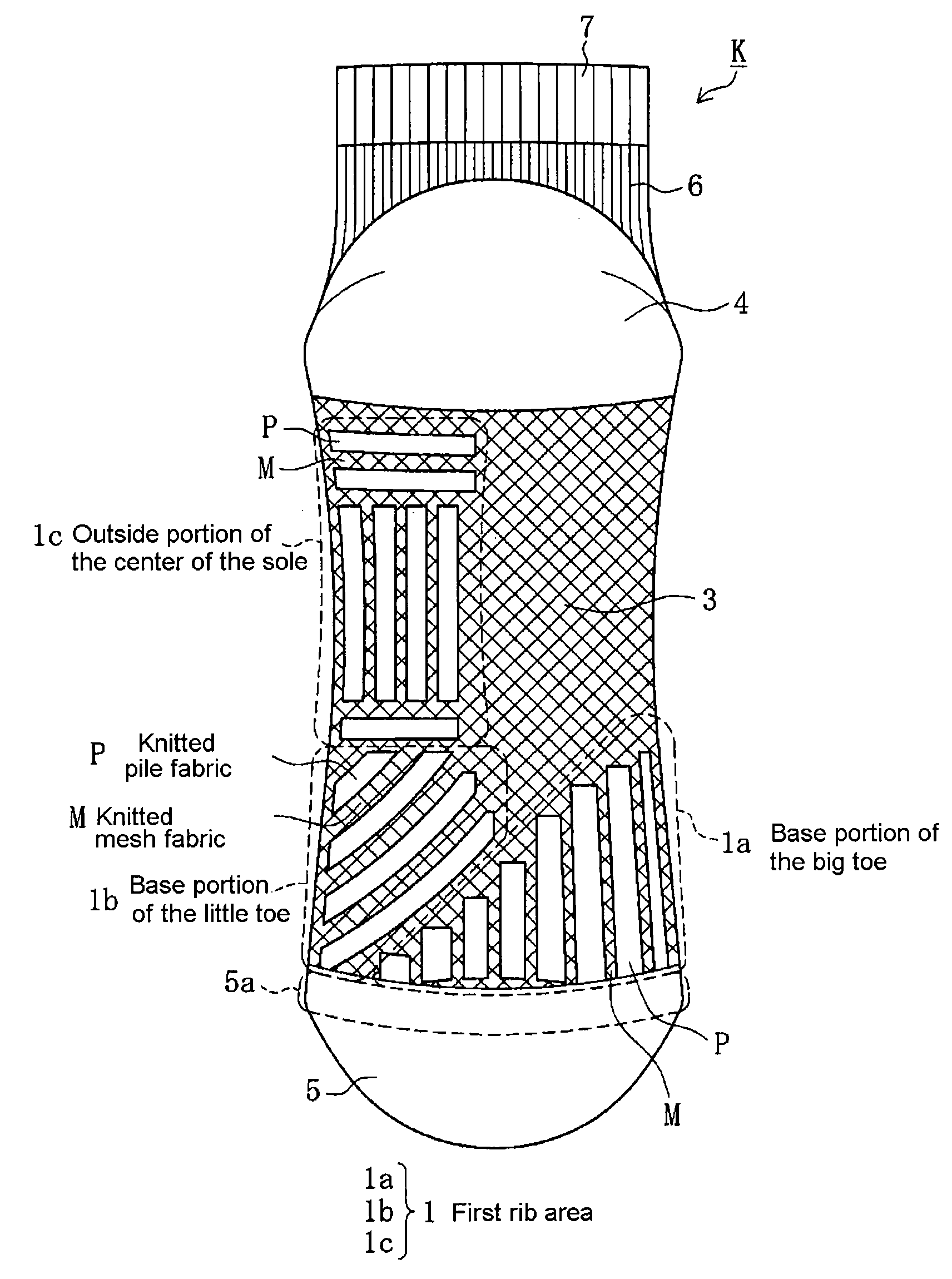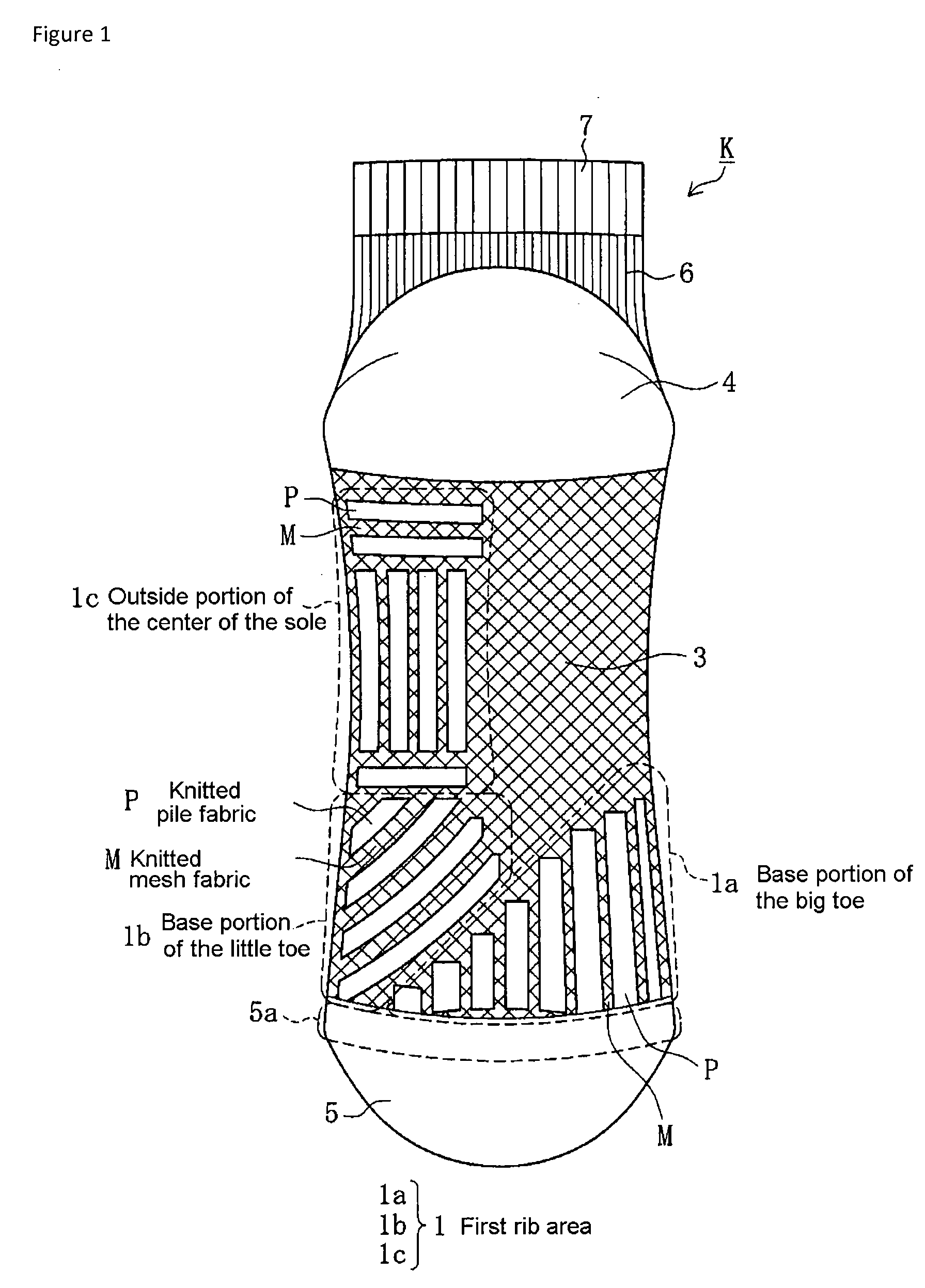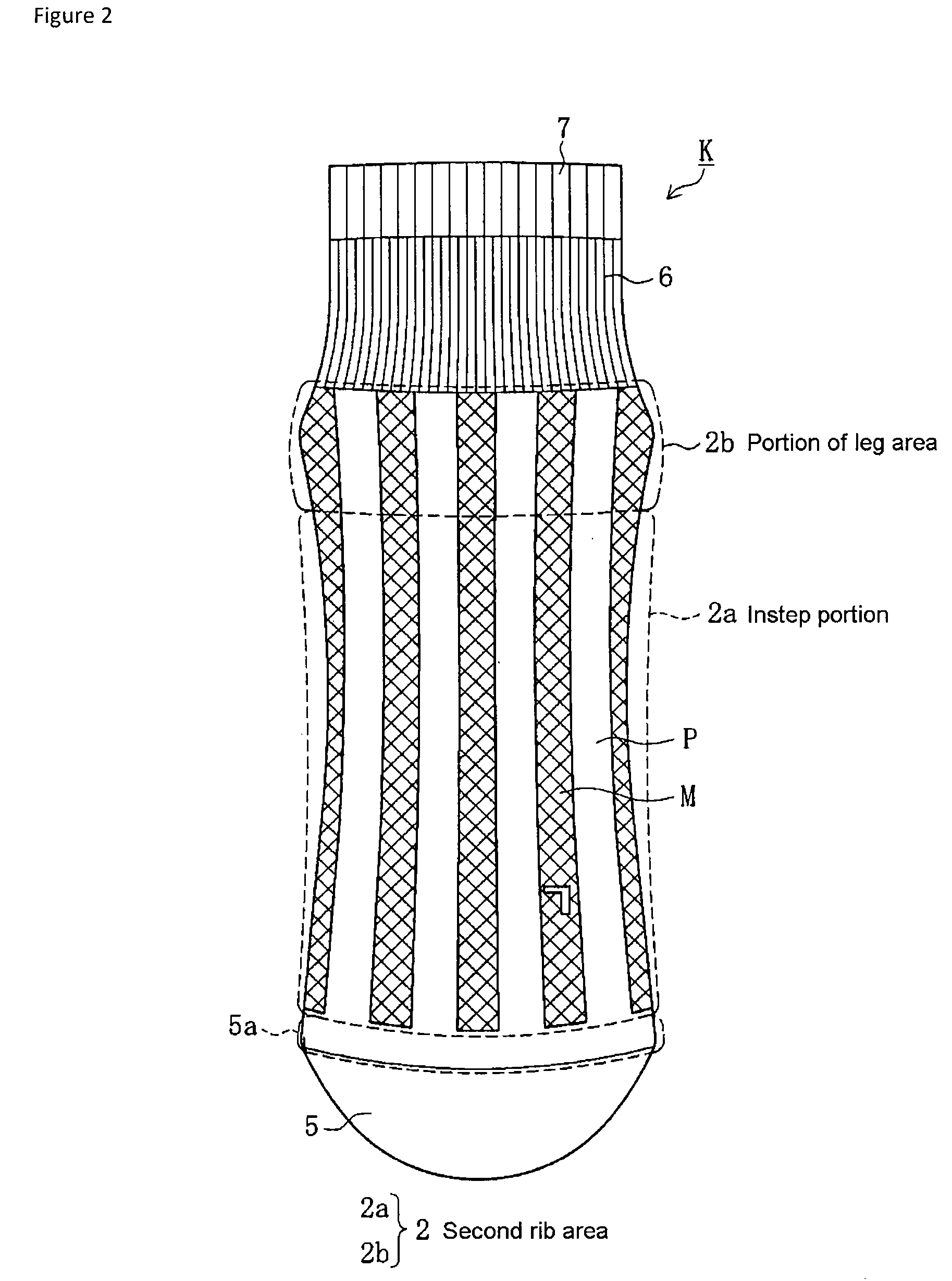Sock
a technology for socks and soles, applied in the field of socks, can solve the problems of no escape route, inability to introduce air from the outside of the shoe to the inside of the shoe, etc., and achieve the effects of increasing air permeability, high water absorption ability, and rapid drying properties
- Summary
- Abstract
- Description
- Claims
- Application Information
AI Technical Summary
Benefits of technology
Problems solved by technology
Method used
Image
Examples
examples
[0039]The sock of the present invention is described in further detail with examples below. FIG. 1 is a drawing illustrating a sock of the present invention for use on the left foot, as viewed from the plane of the sole portion. FIG. 2 is a drawing illustrating the sock of FIG. 1 as viewed from the plane of the instep portion. FIG. 3 is a drawing illustrating the sock of FIG. 1 as viewed from the plane of the big toe. FIG. 4 is a drawing illustrating the sock of FIG. 1 as viewed from the plane of the little toe.
[0040]Sock K of this example uses a cotton / polyester blend (60% cotton / 40% polyester) with a high degree of water absorbability and rapid drying properties. An ordinary knitting machine is used to knit with front yarns and back yarns. FTY, which has good knitting properties, is used for the back yarns. FTY is a fiber commonly used as a back yarn in socks, with nylon fibers or polyester fibers covering polyurethane fibers.
[0041]As shown in FIGS. 1-4, the sock K of this example...
PUM
 Login to View More
Login to View More Abstract
Description
Claims
Application Information
 Login to View More
Login to View More - R&D
- Intellectual Property
- Life Sciences
- Materials
- Tech Scout
- Unparalleled Data Quality
- Higher Quality Content
- 60% Fewer Hallucinations
Browse by: Latest US Patents, China's latest patents, Technical Efficacy Thesaurus, Application Domain, Technology Topic, Popular Technical Reports.
© 2025 PatSnap. All rights reserved.Legal|Privacy policy|Modern Slavery Act Transparency Statement|Sitemap|About US| Contact US: help@patsnap.com



